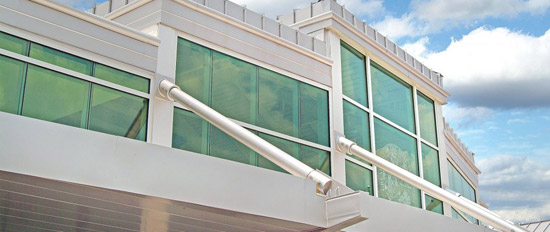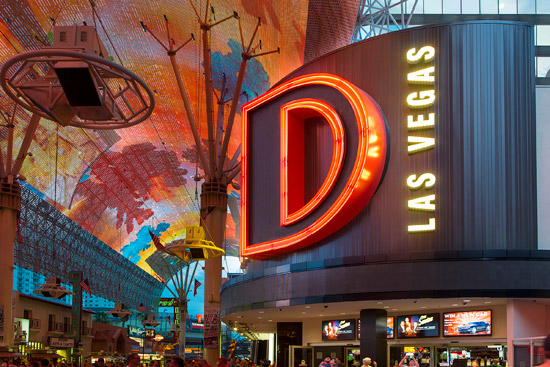Metal Exterior Walls
Green Building Contributions from Metal Exterior Walls
The MCA points out that metal wall panels are an environmentally responsible and sustainable design choice that features high recycled content, low maintenance and long service life. In addition, the metal used in the panels is 100% recyclable at the end of its useful life.
The US Green Building Council (USGBC) has developed the LEED® rating system for green buildings which has been recognized as the leading green building standard in this country. The LEED 2009 system is in place until the year 2015 which overlaps with LEED version 4 introduced late in 2013. Since buildings are currently being designed under both systems, credits available for both are summarized below through the use of preformed metal wall panels.
Sustainable Sites
Under LEED 2009, credit 7.2 is available for reducing the heat island effect. This is primarily for roofing systems and makes 1 point available. Since many metal wall panel manufacturers also produce metal roofing panels they have developed products that meet the criteria to reflect heat and thus reduce the heat island effect. Under an innovation credit, it may be possible to show that the same heat reflective qualities are available in wall panels and therefore help reduce environmental heat build-up.
Optimize Energy Performance
Both LEED 2009 and LEED v. 4 place a strong emphasis on reducing the use of fossil fuels and increasing the use of non-polluting renewable energy. Cool metal wall and roof products have been shown to contribute to excellent thermal performance by reflecting away unwanted heat from the building as well as the surrounding site. In order to receive points in this credit category the building must demonstrate a percentage increase in energy savings in accordance with ASHRAE standards. The number of points available depends on the degree of energy savings.


Photos courtesy of Petersen Aluminum / PAC-CLAD
Flush panels used for siding and soffits at the Florida Welcome Center help reflect heat and add to the energy efficiency of the building while creating a vibrant look at the D Casino in Las Vegas.
Materials and Resources
This area has changed dramatically between the different versions of the LEED® rating system. LEED 2009 includes four areas where metal wall panels can contribute to an overall green building:
• Credit 1.1: Building Reuse: Maintain 55%, 75% or 95% of Existing Walls, Floors and Roof (1-3 points) Metal panels can be salvaged and re-used in existing buildings that are being renovated.
• Credit 2: Construction Waste Management (1 -2 points) The single component nature of custom fabricated metal wall panels limits scrap material and reduces construction site waste accordingly. Further, any excess material is fully recyclable so that it is fully diverted from the waste stream and disposal.
• Credit 3: Materials Reuse: 5% or 10% (1 or 2 points) Metal wall panels that can be salvaged or re-used from an existing building can contribute directly to this point.
• Credit 4: Recycled Content: 10% and 20% (1 – 2 points) In theory, there are no limits on the recycled content of metal building panels – it can go all the way to 100%. As a practical matter, the following are more common recycled content levels:
• Aluminum – up to 85 percent total made up of approximately 60 percent post-consumer and 25% pre-Consumer
• Steel – between 28 – 35 percent total made up of approximately 25 percent post- consumer and approximately 7-1/2 percent pre-consumer
• Credit 5: Regional Materials (1 – 2 points). Many metal wall panels are manufactured in the USA meaning a regional material contribution is possible depending on proximity to the building.
The Materials and Resources category under LEED v. 4 takes a rather different approach to defining the green nature of building products. There are still credits for Building Re-use and Construction Waste Management, but the rest of the approach focuses on the full life cycle of those products. The key documentation needed to demonstrate performance under this approach is referred to as an Environmental Product Declaration (EPD). Individual manufacturers or a trade association can prepare specific or generic EPDs for products. In the case of metal wall panels, the MCA has prepared and released such a document that covers the range of metal wall panels on the market. The overall intent is to address an emphasis on transparency in the sourcing, ingredient, and manufacturing processes as called for in LEED v. 4.
EPDs are intended to provide Life Cycle Analysis based information and details about the products' environmental aspects thus assisting purchasers and designers in making informed comparisons between products. The MCA industry-wide EPD contains valuable facts about product definition, building physics, the basic material and its origin, product manufacture and processing, in-use conditions, life cycle assessment results, and testing results and verifications. Environmental impacts are assessed throughout the product's lifecycle, including raw material extraction, transportation, manufacturing packaging, use, and disposal at the end of a building's useful life. All content in the document has been reviewed by a UL Environment Review Panel and independently verified in accordance with ISO 14025 and ISO 14044.









